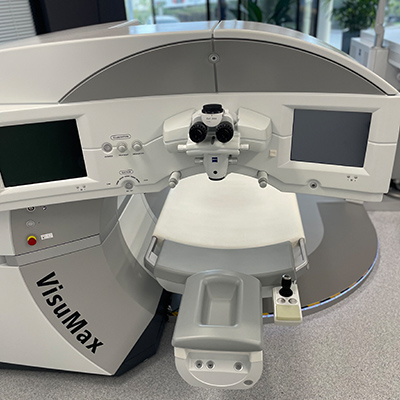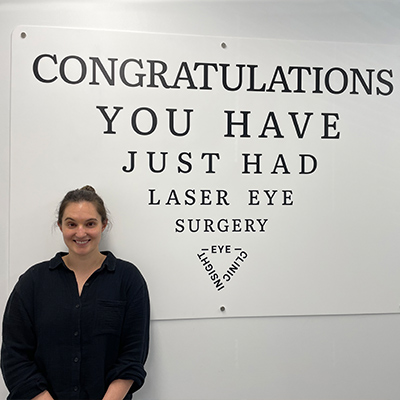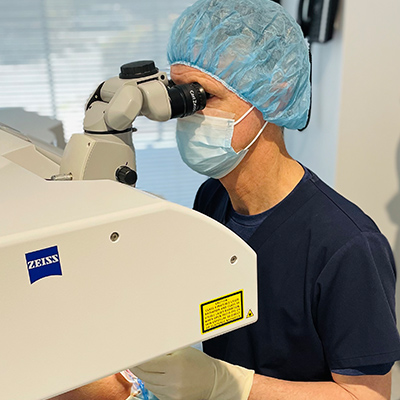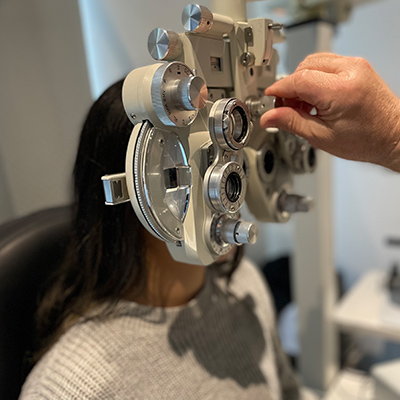Refractive Surgery Choices
We will all experience or hear of the limitations of both imperfect vision and refractive aides. Whether this is fogging of the glasses behind a theatre mask, or the loss of peripheral vision detail when trying to sink that crucial long putt; or maybe surfing or sailing with the risk of sudden blurred vision due to a lost contact lens or salt sprayed glasses? Refractive surgery might avoid the frustration of being unable to read a text message until you have found your readers, or the embarrassing moment in the spa when you have hugged the wrong person! The opportunity to achieve good quality spectacle-free vision exists for most people.

Refractive error
The need for glasses or contact lenses may develop by our teens or early twenties, due to myopia (weak distance vision), hyperopia (weak near vision) or astigmatism. This is due to the lens system of the eye (cornea + lens) not forming a focused image at the retina. By age 50 most have lost the ability to adjust between distance and near focus (presbyopia, or stiff lens). During our 60s and 70s, lens opacity (cataract) can impair spectacle vision.
Refractive surgery overview
Refractive surgery is very successful at treating the basic errors of myopia, hyperopia and astigmatism. Presbyopia treatment is however unable to restore full adjustment between distance and near focus. This means that independence from spectacles for those over age 50 is achievable, but with slightly reduced clarity compared to full spectacle correction.
The most commonly used refractive procedures, with excellent track records, are:
- Laser corneal reshaping: A tiny lenticule is created within the corneal layers and removed (SMILE), applied to the surface (photorefractive keratectomy/PRK) or beneath a flap (laser assisted in situ keratomileusis, or LASIK).
- Supplementary (phakic) intraocular lens implantation
- Refractive lens exchange (RLE)
Age-based choices
Refractive lens exchange (RLE) vision correction is stable long-term, and avoids the need for cataract surgery later, but it disturbs any natural accommodation under age 50. Therefore RLE rarely is considered under age 45.
Laser vision correction
SMILE, LASIK and PRK are the most commonly used corrections for the pre-presbyopic age group. Advantages include bilateral same day surgery, and retained near vision adjustment until near the age of 45. SMILE and LASIK have minimal discomfort and enable return to work after 2-3 days, while PRK has more discomfort and requires 1 week to return to work. PRK is far less likely to induce dry eye or corneal warpage (ectasia) and post-operatively there is less risk of significant injury with minor corneal trauma.

Presbyopic solutions
After the age 45-50, correcting distance vision in both eyes leaves near vision that requires glasses. Natural lens changes will eventually cause a decline in distance vision in both laser correction and phakic lens implant. This favours the use of refractive lens exchange (RLE) for stable long term results.
RLE is essentially a cataract operation done before any visually significant opacity of the lens has developed. There are several choices of replacement intraocular lenses. Monofocal lens implants can be chosen to correct each eye for distance vision (requiring glasses for clear near vision), or alternatively the dominant eye is corrected for distance and the non-dominant eye for near vision. This monovision configuration can provide independence from spectacles and is very effectively demonstrated by temporary use of contact lenses, ensuring good understanding of what is achievable.
Multifocal lens implants achieve balanced bifocal vision in both eyes. Halo and glare and limited intermediate vision clarity (e.g. computer screen) can occur and are difficult to demonstrate pre-operatively. Occasionally; halo and glare intolerance may require bilateral monofocal intraocular lens exchange.





